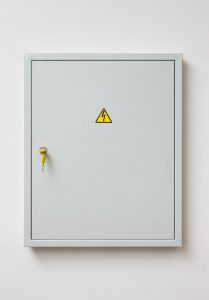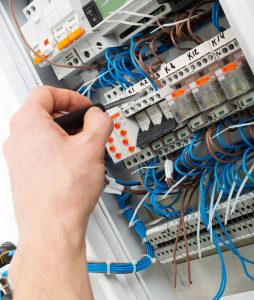The majority of Federation-style residences that occupy the inner suburbs of Melbourne are often plagued with cases of repetitive dimming lights, exposed wiring, and regular circuit or fuse breaker trips which may also often lead to blackouts. Domestic electricians in Melbourne are virtually all in agreement that the main cause for all of these issues is out-of-date wiring and electrical insulation. But considering how tricky it can be to assess these older homes, you may also need to provide your electrician with some information about the specifics surrounding any kind of electrical fault. Here’s what you’ll need to consider if you’re looking to identify some common domestic faults independently.


1. Electrical testers
The first place to start your search would be at your meter box or fuse box. This can be done in one of two ways: a visual inspection, and with a multimeter reading. Be sure to always flick your main switch off before you begin your tests to mitigate the risk of electrical shock or electrical damage to your residence.
The visual inspection entails using a flashlight to thoroughly inspect all components of your fuse box, from your fuse to your meter. Look out for any signs of damage like frayed wiring, cracked switches or cracks in your fuse, and be aware of the common signs of issues with electrical wiring. If there are dark spots or disruptions in the wire within your fuses, that fuse is likely to be blown and will need to be replaced. Try not to touch any damage yourself during a visual inspection.
Using a multimeter or other kind of electrical tester when your main switch is off is all about finding electrical leakages, generally by testing the voltage in wires or devices. But there are a ton of different electrical testers out there, so it can be worthwhile opting for a specific kind if you’re looking to perform a specific test. For instance, if you believe that your electricity bill has risen due to an electrical leak, you can use an inductance tester to assess areas like wiring, sockets, and even electrical devices, to ascertain whether or not they’re giving an unexpected voltage.
2. Assess circuit breaker trips
Circuit breaker trips often occur for very specific reasons, especially in newer homes with up-to-date systems. If you find that circuit breaker trips are a regular occurrence in your home, it would be a good idea to identify and assess all your outlets by testing all the devices that are connected to them until you find the cause for the trip. More often than not, circuit breaker trips are caused by an overloaded outlet, making them relatively easy to find. In some instances, the cause for trips can be so singular and easily apparent that they can be identified right upon the trip, such as a hairdryer operating on maximum power on an overloaded power board in your bathroom, which leads to an abrupt flickering of your bathroom lights that rightly lets you know you may have an issue with your circuit breaker. Be sure to get into the habit of noticing tell-tale signs of circuit breaker trips in your day-to-day life.
3. Observe your light bulbs
Finally, it’s good to keep in mind that the strength and consistency of the hue of your lightbulbs can serve as an easy indicator for any potential electrical faults. Be sure to look out for light bulbs rising or dipping in power, and monitor roughly how long it takes for your light bulbs to blow out. Being aware of the wattage of your bulbs is oftentimes viewed as the first step towards a healthy level of domestic utility know-how.
It’s vital that your home receives an electrical safety inspection at least once a year to ensure that any issues can be identified well before they become full-blown liabilities. Be sure to get in touch with a licensed electrician to promptly schedule your next inspection.



